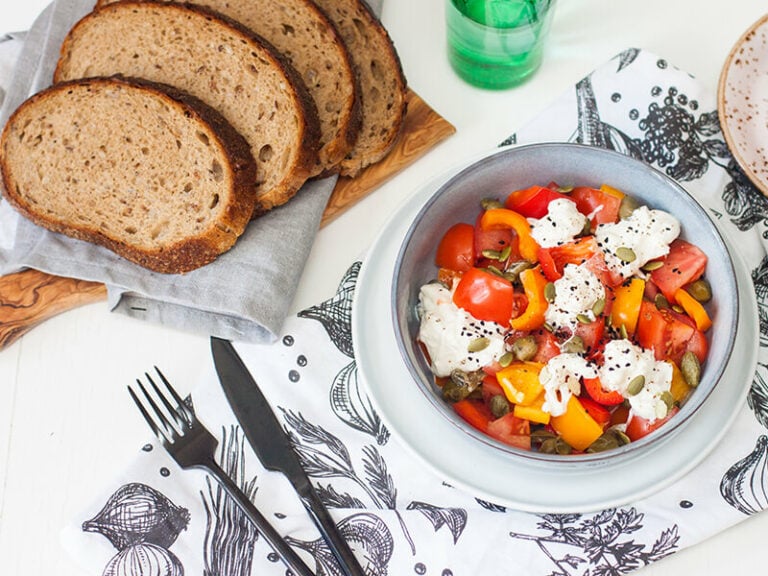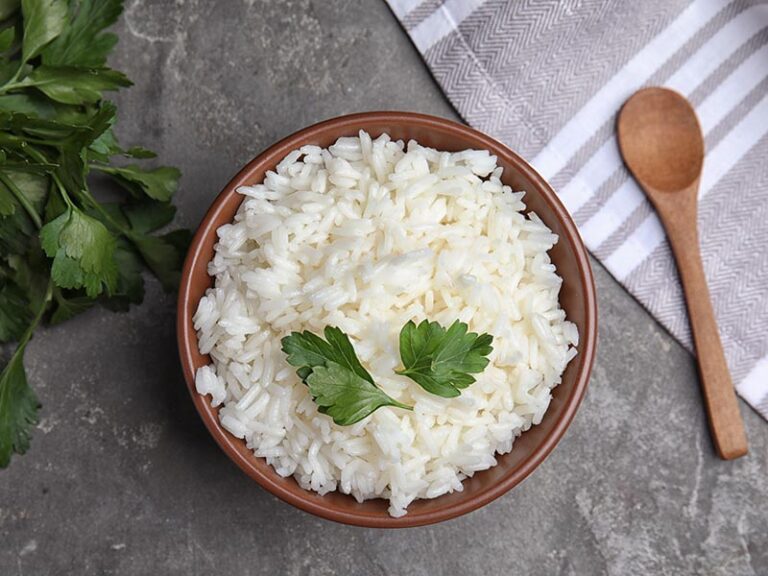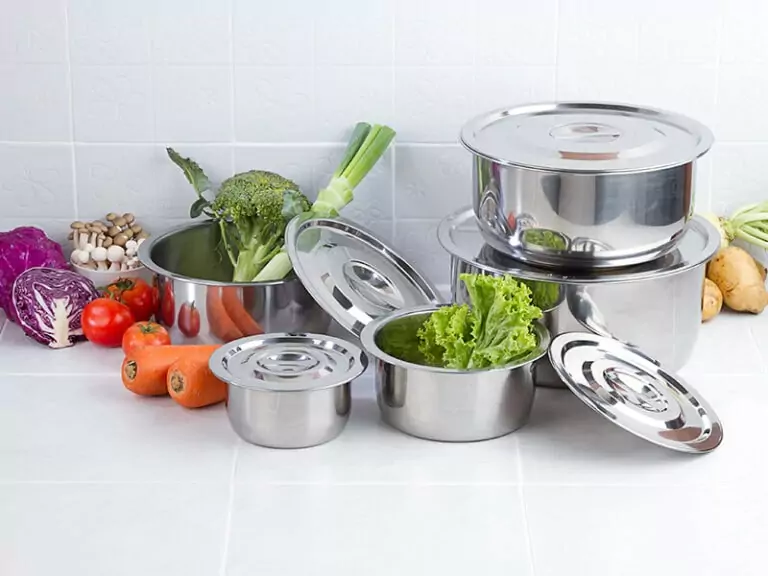The most intriguing question would be, “Does salt kill yeast?” for most novice bakers. Both play a significant role in baking, whether flavor, volume, or color. Unfortunately, not many understand the interaction between these two and misuse them.
Understanding your struggles, I’m proud to introduce you to this article. It will give everything you need to know about when combining salt and yeast. Pay a little attention, and your finished loaf will turn out spectacularly.
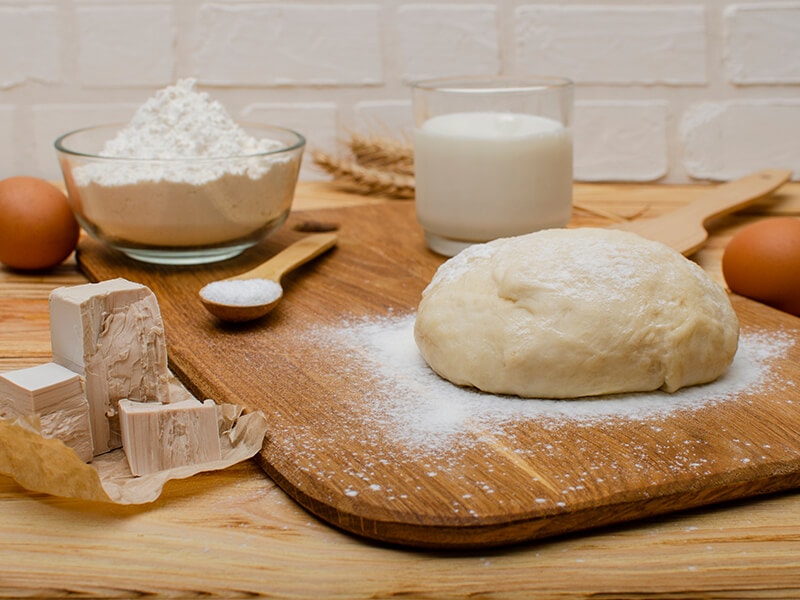
Salt And Yeast’s Roles In Bread Making
Before moving on to the main question, join me to find out what salt and yeast have to do with your dough. Why are these items foundational ingredients in most bread recipes? Scroll down to find out now!
Reasons To Add Yeast To Dough Bread
Have you ever wondered why yeast is an essential ingredient in most bread? What effect does it have on the dough? Keep on reading to unveil the bond between bread and baking yeast.
What Yeast Do To The Dough Bread
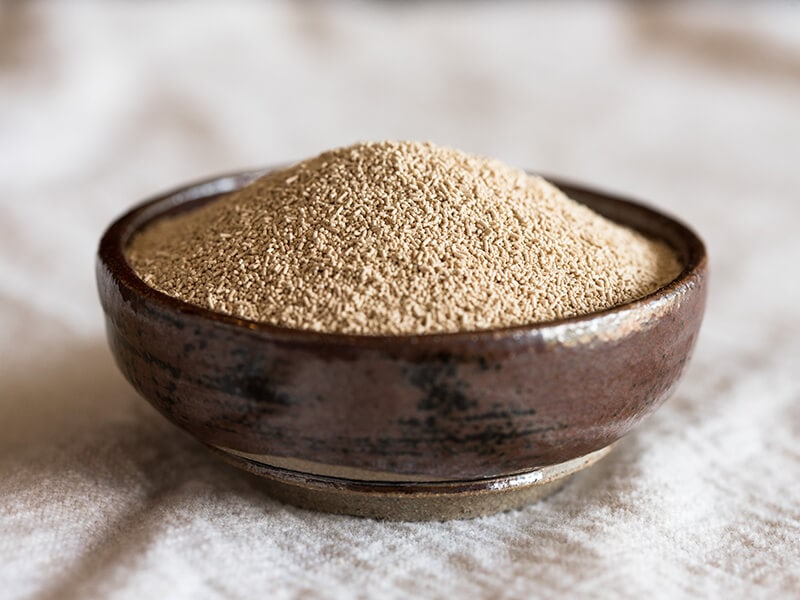
The answer is simple: yeast helps the dough to rise. Simply put, the dough rising works based on alcoholic fermentation. As a leavening agent, yeast feeds off sugar in flour starch and converts it into carbon dioxide and ethanol.
These byproducts appear in bubble forms and get trapped inside the dough, expanding its size or “rising.” During baking, the heat will make the bubbles grow even more.
It’s worth mentioning that yeast is a tricky friend to work with since it’s pretty sensitive to the surrounding environment. Therefore, the temperature is most likely to harm these single-celled fungi. Note that it’s only active in the temperature range between 80°F and 90°F.
Learn how to make yeast water for your bread and pocket some tricks along the way.
Types Of Baking Yeast
The world of baking yeast is diverse and understanding each type’s characteristics helps you avoid unexpected situations. It will take days to talk about all the varieties, so this article will mention several types that are familiar to the general public.
Compressed Yeast
Compressed yeast has other names, such as cake, wet, or fresh yeast. This yeast type has been drained most of its water and pressurized into small blocks. Due to the short shelf life, it’s preferable in high-speed bakeries and is more affordable than other siblings.
Active Dry Yeast
Active Dry Yeast is the most common baking yeast, so it’s easy to find this type at any store or supermarket, sold in packets or jars. It has a long shelf life and is suitable for those who don’t bake regularly. Noticeably, this type will lie dormant until you wake it up with warm water.
Instant Yeast
Instant yeast is also known as fast-rising or quick-rise yeast. This one and active dry yeast share many similarities, but it dissolves and activates faster than the latter. Therefore, instant yeast seems easier for novice bakers since they can skip its proofing steps.
The Importance of Salt In Bread
There are reasons that salt is a foundational ingredient in bread baking, from dough making to the final results. Do you want to know how crucial these white crystals are to a successful dough batch?
Yeast Fermentation Control
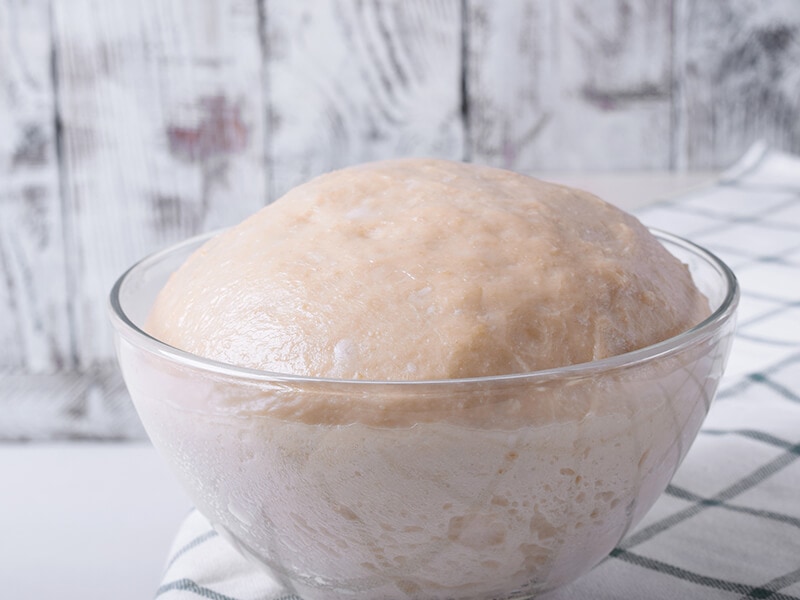
In bread, salt acts as a yeast regulator during the fermented process. Fermentation occurs when the yeast converts sugar into gas, which causes the dough to rise. Adding salt slows down the process, leading to a better dough and overall taste in the final loaf.
When there is too little salt on the dough, the pace of fermentation will escalate, leading to a faster rise. This is not good since the salt-free dough can be frighteningly sticky and impossible to shape or knead.
Strengthen The Gluten Bonding
Another magic of salt on the dough is to tighten the gluten network, which is responsible for the final product’s structure. The presence of salt allows the dough to hold more carbon dioxide and water. In return, the dough can extend without ripping or tearing up.
In addition, it helps support the bread’s volume because the chloride ions in salt neutralize charged sites of glutens and protect it. It’s clear to notice that unsalted or less-salt dough is sticky and hard to shape during kneading, leading to a poor final volume.
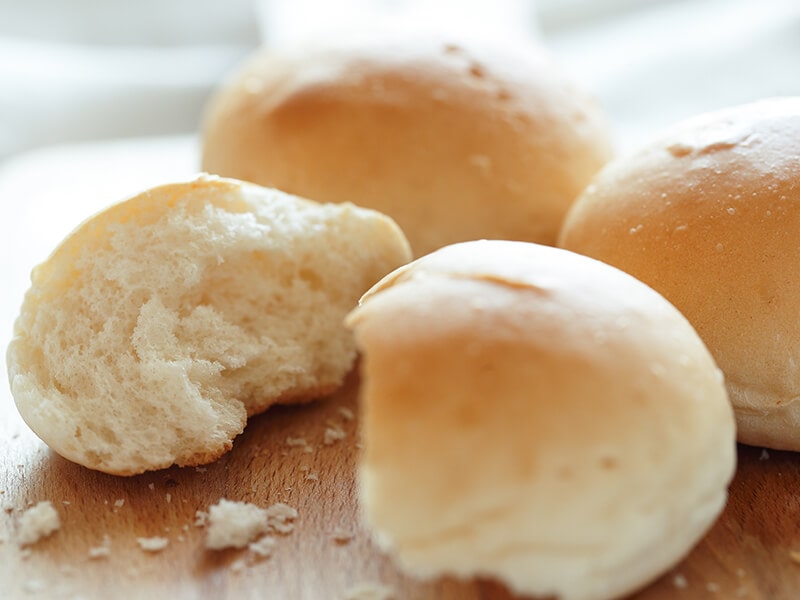
Improve Crust Color
As a matter of fact, the residual sugar is the key behind the bread’s caramelization. However, without salt and its fermentation-controlled ability, the yeast will finish off all the sugar in the dough. That leads to a depletion of sugar and a pale bread crust at the end.
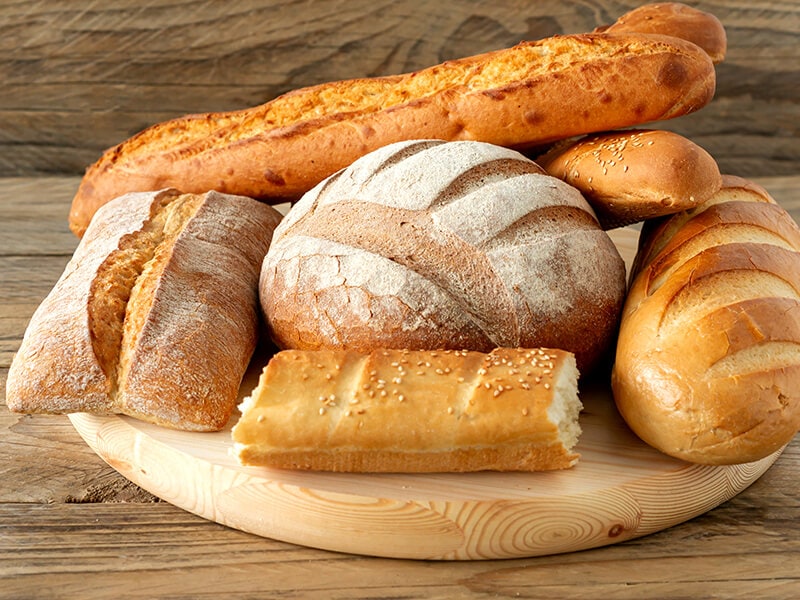
Enhance Flavor
It seems like an overly-obvious answer, but salt is indeed an undeniable flavor enhancer. In the world of baked products, a small amount of salt is good for developing a sweet taste to the loaves. Thanks to sodium chloride, it will hamper the bitter taste and intensify the sweetness.
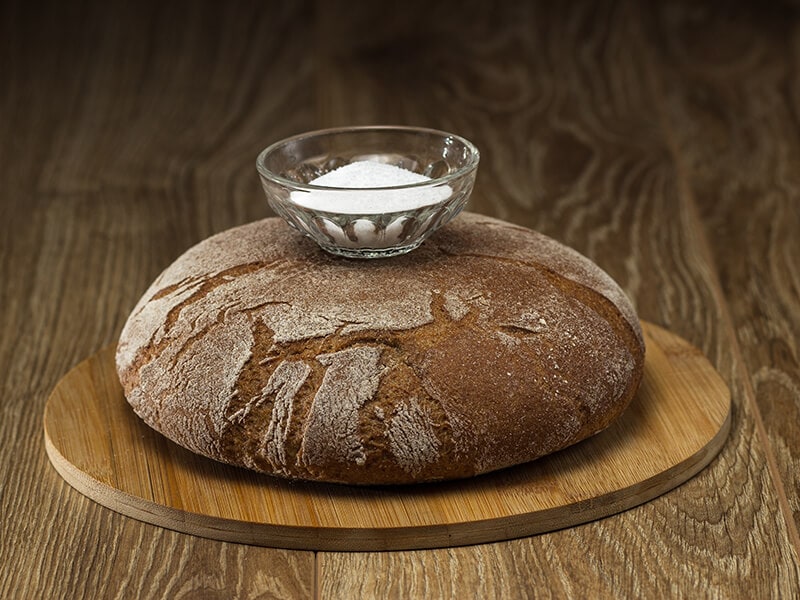
Can Salt Kill Yeast? – Myths And Truths
It’s time to unveil the most intimating myth of novice bakers: “Does salt kill yeast?” Through this section, I will detail the relationship between these two items in bread baking. Tag along to find out more hidden facts about them.
The Possibilities That Salt Harms Yeast
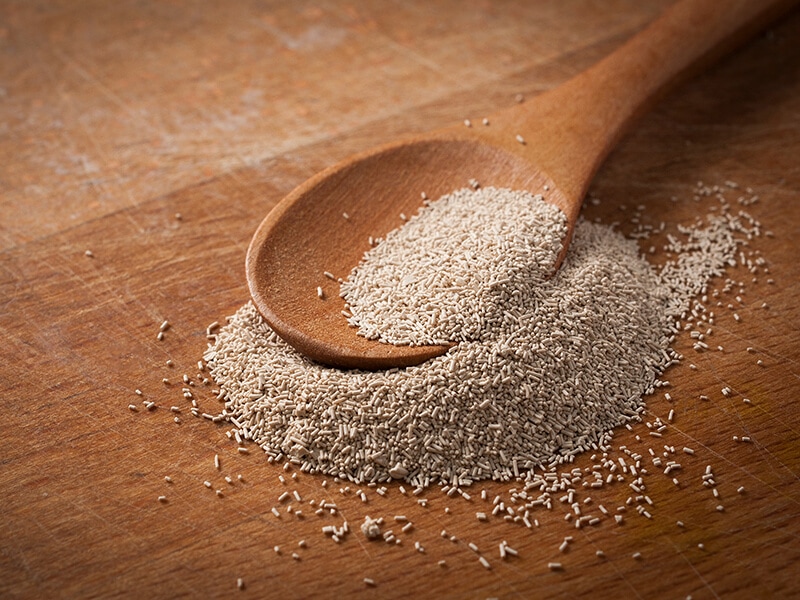
In response to this topic, the answer is yes. Like sugar, salt can be a real threat to yeast with a significant amount. Conversely, salt in low concentrations cannot destroy yeast but will slow down its fermentations. This way, it only impacts the rate of the dough rising.
The worst scenario happens when you use an excessive amount of salt. Leaving the salt in yeast water for too long is also fatal since salt needs an extended period to kill these microorganisms. Given the average amount of salt used in bread recipes, you won’t have to worry about it.
To my surprise, yeast has taken new evolutions to tolerate high salt concentrations in response to environmental challenges over the years. According to McGill University’s statements, this adaptation can be completed within 50 – 100 generations (1).
Unveil the secrets behind the myth about yeast and salt mixing, and you’ll be surprised to know the truth.
Science Behind How Salt Kills Yeast
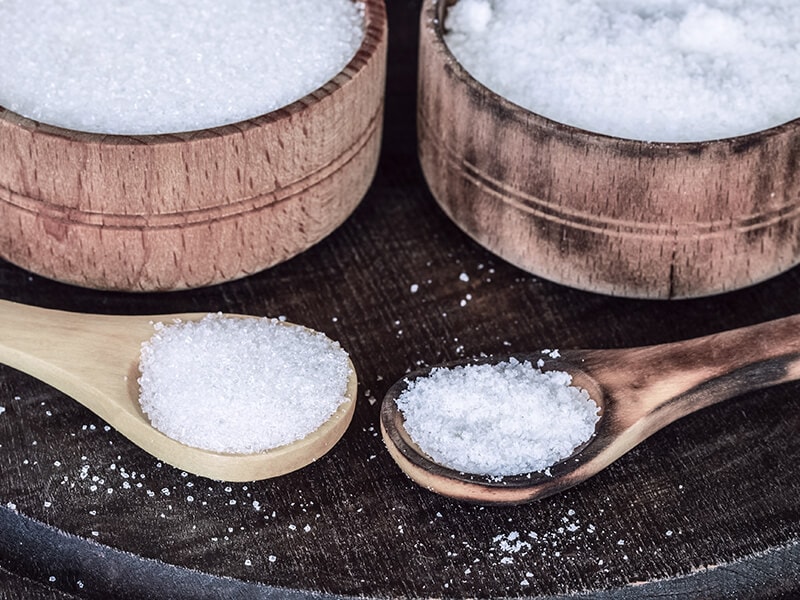
To break it down a little, let’s talk about how salt controls the yeast’s ability. As hygroscopic, it drains out the moisture from this microorganism. This process is osmotic shock, a technique to weaken cells due to a rapid change in water flow across the cell membrane.
Eventually, this stress will put pressure on the cell membrane and cause critical damage, resulting in the yeast’s death. With such a scale of destruction, imagine what a large amount of salt can do with your precious yeast.
On the other hand, lower concentrations of salt are not enough to cause massive damage to yeast fermentation. It only stabilizes the action of yeast and helps create a richer and more uniform crumb.
When Salt Can Kill Yeast
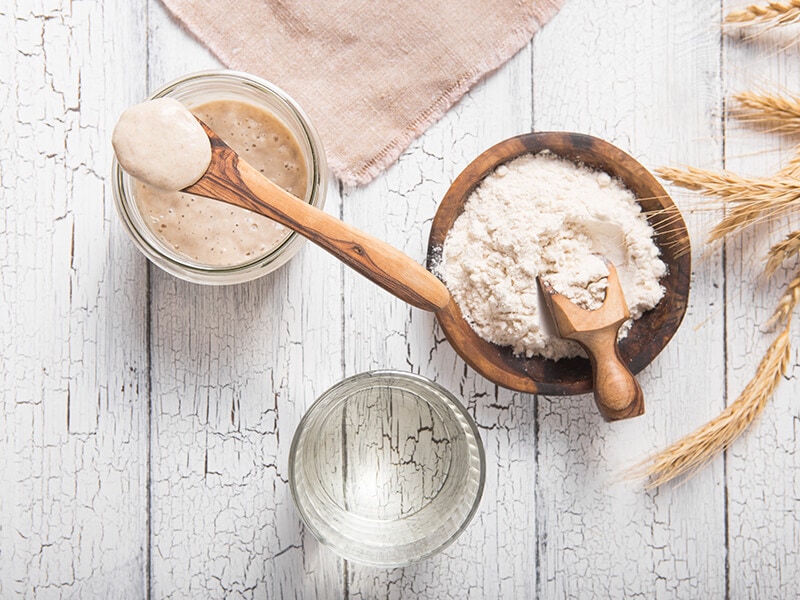
Though the two ingredients eventually will meet in the dough mixture, it’s best to avoid throwing them together directly. Salt can kill yeast on the spot via direct contact, and there will be zero chance for your dough to rise.
Even if a large amount of salt accidentally touches on yeast, there is blurry visual evidence since the dough is still rising. The impact of salt on yeast isn’t immediate. The osmosis stress takes hours for the yeast cells to break down completely.
Figure out how the amount of salt can impact the rate of dough rise through this experiment.
Excellent Ways To Avoid Yeasts Getting Killed
Though yeast often gets a bad rap for being perishable, handling these single-celled fungi is not that complicated. It’s agreeable that a good active yeast requires extra attention, but all your hard work will pay off when you see the finished baked product.
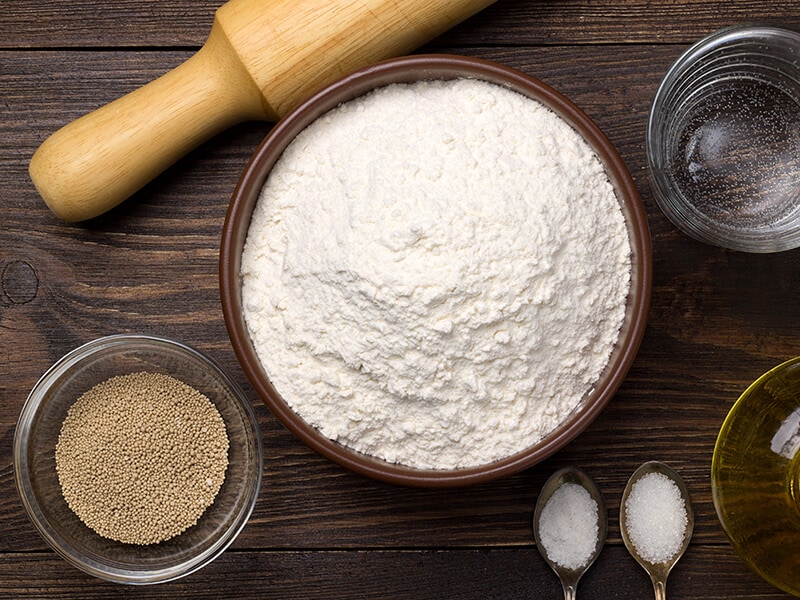
Prevent Direct Contact
As I stated earlier, direct contact between yeast and salt is deadly. Thus, to avoid this error, you’d better combine salt with dry ingredients and let the yeast join later after activating it using warm water. This is a safe move for most of the yeast available on the market.
Use Exact Measurements
Another tip to prevent killing yeast is to get into the habit of weighing your ingredients in grams. Regarding the yeast, salt, and sugar trio, a small mistake in measurement can go a long way.
Balance Salt With Sugar
Using sugar to balance salt is a gamble, but it could be a hero at the last minute. As you already know, sugar is yeast’s food. Therefore, the sugar’s presence can provide more nutrients to yeast. It will ensure yeast survival when there is too much salt in the dough.
Be mindful that this action might take a toll on the overall flavor of your bakery goods. Moreover, like salt, an overabundance of sugar also hampers yeast growth.
Salt Your Dough – How Much Is Enough?
Of course, you can make your bread with or without salt. But don’t skip it because you’re afraid to use these crystals with the yeast. Be mindful that salt is a crucial part of flavors and has other beneficial functions in bread baking.
The Moderate Amount Of Salt For Bread Baking
In bread making, 1,8% – 2,2% of salt over the total weight of flour is the standard range of most recipes. This number keeps the calculations simple. Not to mention, it is enough to add flavor to the bread while keeping the fermentation in check.
Interestingly, the UK has just announced the new salt target for bread, which is 1g of salt per 100 grams of finished baked goods (2). Feel free to follow whichever ratio that suits you best. Note that if the amount of salt in the recipe surpasses these ranges, you’d better reduce it.
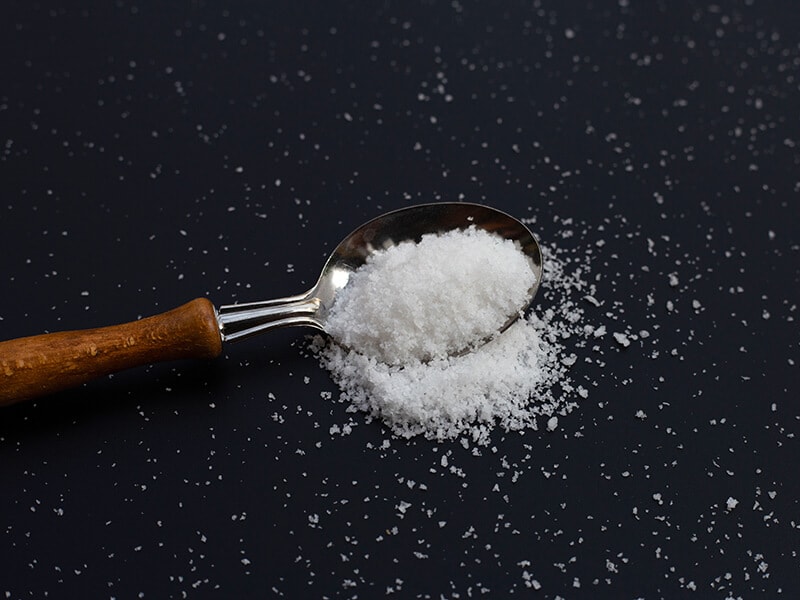
Over-Salted Or Low-Sodium Dough – Which One Is Better?
Needless to say, the over-salted dough has downsides. Apart from a salty final result, too much salt is a yeast killer, so the dough will take longer to rise. Plus, the overall texture of the finished bread will be chewy due to the more vital interaction of salt with gluten.
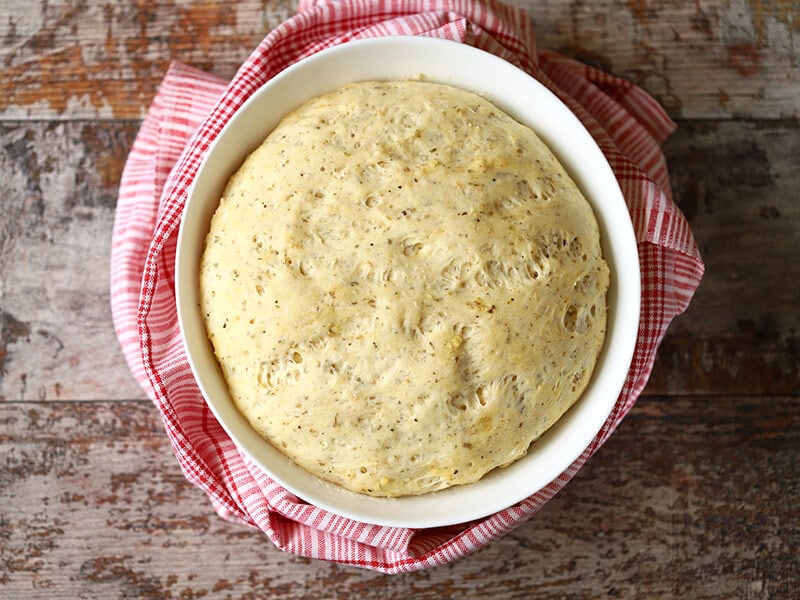
Conversely, since the salt is the gluten-network tightener, salt-less dough’s texture will be sticky. Also, the dough’s fermentation will be unstoppable. It’s no surprise if your bread has less flavor development and a poor structure. But worst of all, low sodium may produce a bland or no taste.
All in all, there is nothing good when the dough is over-salted or contains too little salt. The most brilliant move is to add a moderate amount of these white crystals for the best results.
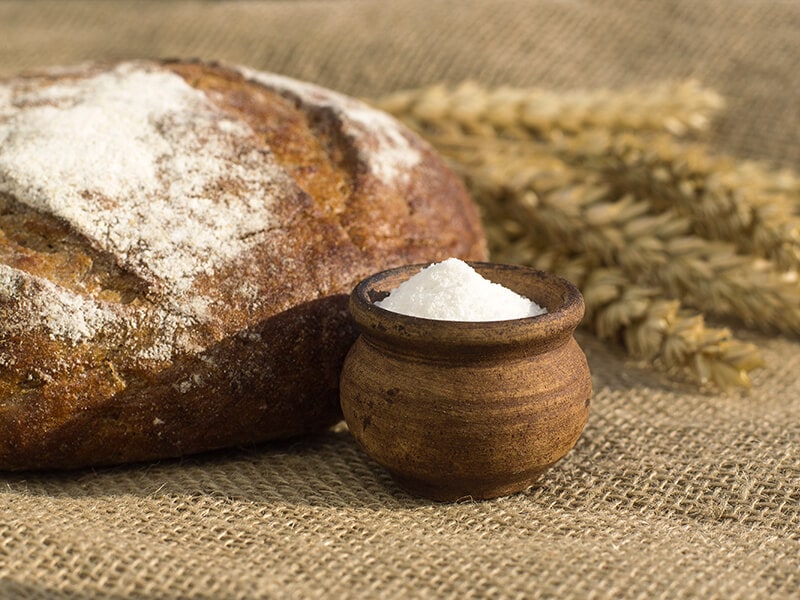
When To Add Salt To Bread Dough
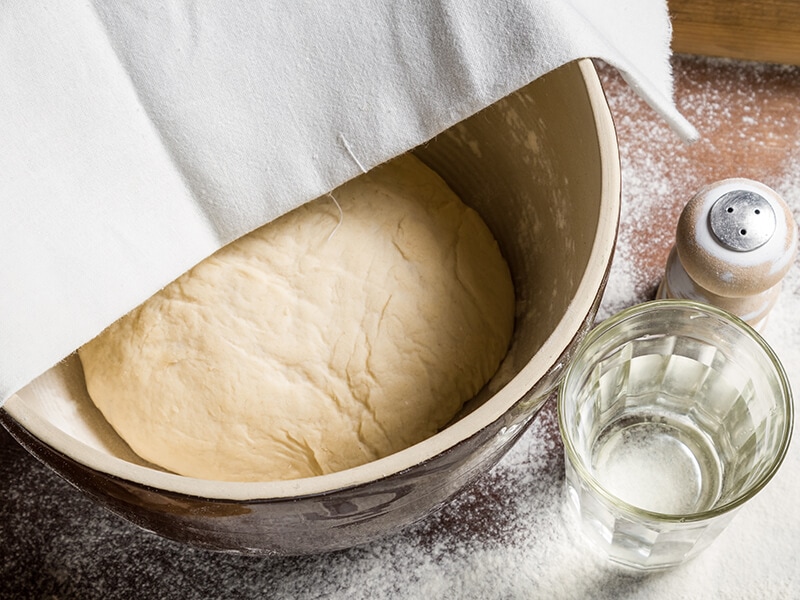
The time to add salt during the process will significantly affect your dough. Many prefer to wait until the last minute, while some recommend the other way around. However, it’s best to add salt after the dough has rested for a while and before kneading.
As these white crystals are yeast controllers, adding them early is better for regulating fermentation. Also, everything takes time to create interaction, and so do gluten and salt. Adding salt before kneading makes the gluten work more efficiently, resulting in a better dough shape.
Can you point out the differences between no-salt and salted bread?
Easy Guide To Mix Salt, Yeast, And Flour
As I said previously, you have to do your best to avoid direct contact between salt and yeast, but there are exceptions. Below are detailed instructions, so follow along to know how to deal with these troublemakers.
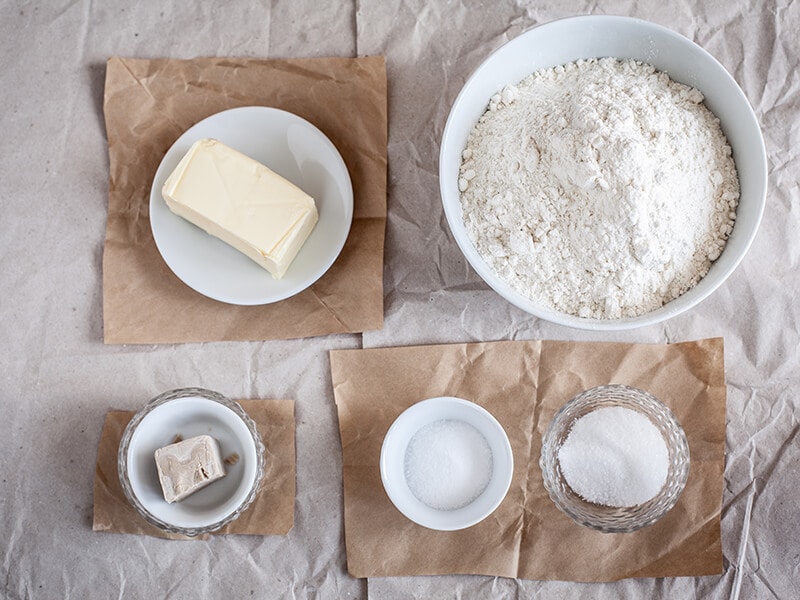
Instant Yeast
In the instant yeast case, you’re free to let yeast and salt touch each other directly for extended periods. Just make sure that both of them are in the dry stage. When preparing the dough, all you need to do is pour everything into one place, add water, and mix them together.
Fresh And Active Dry Yeast
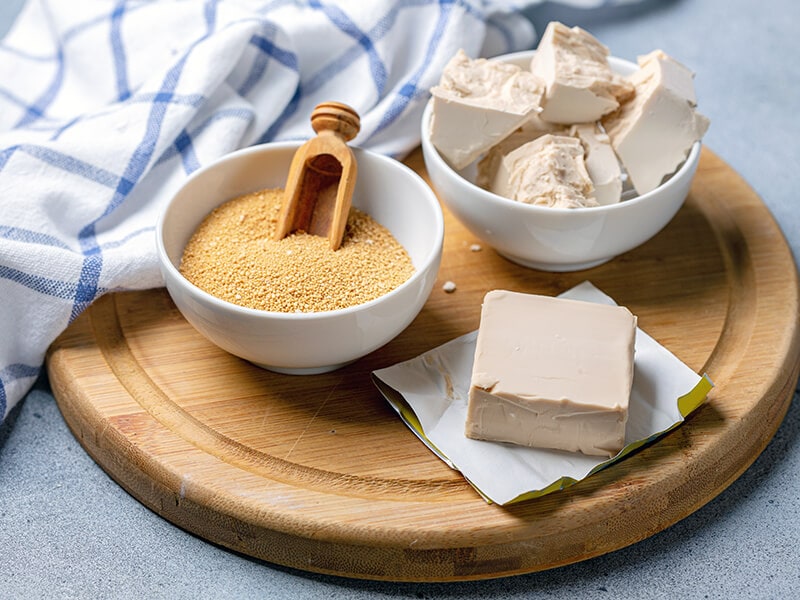
Different from instant yeast, fresh or active dry yeast won’t work in the same application. These types of yeast need to be proofed with warm water beforehand. This step is a time-saving practice to test whether the yeast cells are alive or inactive before use.
Remember not to add salt to the yeast-activated water, as it will also slow down the process and potentially kill the cells. Let the salt mix with the flour instead. After the yeast has activated successfully, you’re welcome to bring it into the flour mixture and carry on to the next steps.
Make sure you have bookmarked this yeast-proofing trick because it will save you a lot of money.
Yeast Bread Recipes You Should Try This Weekend!
Baking is a wonderful excuse to ease your mind and fill your belly, so why don’t you try the recipes below as an activity in your leisure time? Reread the article to become a master in the yeast bread world. Many fluffy and sweet baked goods are waiting for you.
1. Pumpkin Dinner Rolls
When the spooky season arrives, it’s time to give your holiday feast some visual twists with these pumpkin dinner rolls. The combination of yeast dough with kosher salt and minced rosemary will be a feast for your eyes and stomach.
2. Soft & Fluffy Vegan Avocado Bread
No one could say no to this vegan avocado bread. It’s soft, fluffy, and hearty with only several ingredients. This loaf is an excellent option for vegans since it’s free from milk, butter, and eggs. Even better, this recipe is neutral flavored, so feel free to modify it to your desired taste.
3. Bobby Flay’s Parker House Rolls
These Bobby Flay’s Parker house rolls use a family recipe that has withstood the test of time. Give them a shot and make a big batch since these rolls are suitable for freezing and storing. This recipe uses a mixer machine to shorten the kneading time and deliver the fluffiest results.
FAQs
Here comes my favorite part. Knowledge has no limits, and I’m honored to give you some extra information about the topic. Are you curious about what sugar, alcohol, or vinegar can do with your lovely microorganisms? Let’s jump right in!
Busting The Myst Around Salt’s Harms To Yeast!
After finishing this article, have you found the answer to the myths surrounding yeast and salt? Yeast and bread are essential ingredients in bread baking. However, yeast bread is sometimes a nightmare for bakers since it seems complicated and requires extra proofing steps.
There is no need to be afraid when combining these two ingredients now, and you’ll be satisfied with the final result. Please remember that your comments and sharings are precious support to my work, and this website thrives, so don’t be shy to repeat these actions. Happy baking!
References
- Evolution to the rescue (2013) Newsroom.
- Brinsden, H.C. et al. (2013) Surveys of the salt content in UK bread: Progress made and further reductions possible, BMJ open. U.S. National Library of Medicine.



